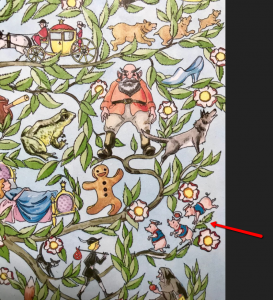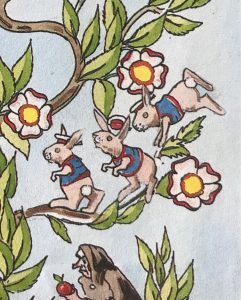
Let me tell you story about a Little Red Hen. This is a story that has a moral, only I’m not quite sure what it is.
Once upon a time there was a Ladybird book about a little red hen and some grains of wheat. You probably remember the story. The hen wants to make a loaf of bread and asks her farmyard companions to help her. “Not I” says the cat “Not I” said the mouse. “Not I” said pig.
Remember it?
Well like all the other Well-Loved Tales in this 1960s series, it was very popular. And then sometime in the 1970s a company approached Ladybird about translating the stories for the Arabic market.
A deal was struck but at some point someone realised that a few adjustments should be made to the stories for the new market. This particular story, for example, heavily featured a pig and it was pointed out that to Muslims (and some other cultures) pigs are regarded as impure and unhealthy.
The pig had to go. I first learned this story many years ago from the artist who had been drafted in to create overlays, turning the pig into a sheep. It isn’t easy for a new illustrator to match the skill of illustrator Robert Lumley (who had a particular gift for portaying the most unlikely activitiy of fairly-tale animal characters in a believable way). The pig was turned into a sheep and the resulting sheep looked rather odd and wooden in comparison, but the changes were made and the books were published and distributed.

The Little Red Hen and the Grains of Wheat





Shortly after they were published, however, someone noticed that there were some sneaky little pigs, lurking within the complex pattern of the Well Loved Tales endpapers. So another artist was called in and pigs become rabbits. This change was made on all the WLT Ladybird books that were sold, not just those for particular markets, so that there could be no mix up.


It took a few years before someone very sharp-eyed spotted yet another pig, just peeping out from behind the skirts of the old woman on the other side of the page. That pig too had to go. It became a cat.


And that, I have always thought, was where the story ended. Until a few days ago.
I have a friend in Algeria who collects Ladybird books and who teaches English. Sometimes he contacts me to ask me questions about the English language or about Ladybird. When he contacted me recently, his question was about both.
“Helen, in English, is there any confusion between the idea of a pig and a sheep?” he asked?
“No”, I replied. “A pig is a pig and a sheep is a sheep. Why do you ask?”
“Well,” he replied, “it’s always confused me why, in the Arabic version of ‘The Little Red Hen’, the picture show a sheep – but the text talks about a pig!”
So after all that meticulous attention to detail … no one had told the translator!
“Who will remember to tell the translator?”
“Not I”, said the publisher.
“Not I”, said the distributor …


Thank you Helen for your beautifully written essay. It’s truly magical and inspiring. Best wishes to you.